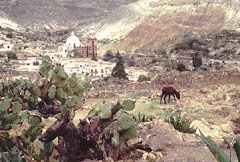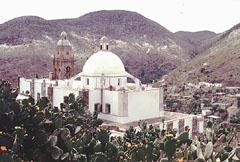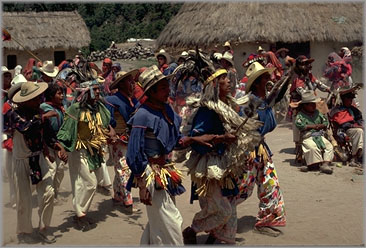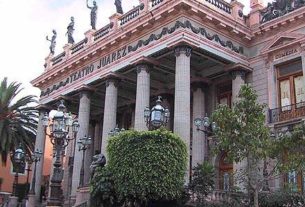He’s stranded in Real de Catorce.
His broken-down vehicle is without license plates, his Mexican tourist visa expired four months ago, and he has no money.
A 20-year-old Alaskan tattoo designer of ancient Celtic spirit symbols, surveys the wavering desert. His beaten-up van isn’t going anywhere. He, too, is stranded in Real de Catorce.
Welcome to “Real,” one of the most unreal destinations in Mexico. The place is a ghost town, and the ambience it holds for some drifters is a bit like the old line about the madhouse: easy to enter, hard to leave — perhaps the original “Hotel California.”

For the adventurous traveler seeking something off the beaten track, however, this virtually abandoned “silver city” possesses a strange beauty. It is located on a dead-end road some 220 kilometers northwest of San Luis Potosi, close to Matehuala. Once a roaring mining town, it now exists in a nostalgic torpor 2,756 meters above sea level among the barren, rolling mountains, tributary to the Sierra Madre Oriental.
Most of the streets are untrodden, buildings and old haciendas lie crumbling and deserted, while ubiquitous cacti sprout among rotting puertas and tapias. A small community, nonetheless, resides in Real de Catorce. It is a life of isolation, obviously with very few creature comforts although the incongruous sight of a satelite dish can be spotted here and there adorning some restored dwelling, installed by a resident extranjero who can’t quite escape the “real world.”
The name means “Royal of Fourteen” in reference to a party of Spanish soldiers who died in a skirmish with Indians in the region around the early1700s. After the discovery of silver, Real was founded in 1773.
By the late 19th century, Real de Catorce was a thriving desert metropolis of 40,000 people, generating three million dollars a year in silver. A two-and-a-half kilometer road tunnel (the Ogarrio) was carved through the heart of the mountain behind which the town was situated, to provide protection from bandits.

But a slump in the price of silver in the 20th century took its toll on the town, as did the 1910 Mexican Revolution which saw capital investment drop off. The seams dried up. Real’s vibrant essence slipped away as its mineral wealth subsided.
It faded away, the town and its environs slowly succumbing to the elements over proceeding decades; it became a ghost…
Old mineshafts and ruins dramatically permeate the hillsides as one ascends to Real de Catorce, a 90-minute bus trip from the nearest town: Matehuala. It’s a bumpy, slow ride, and the visitor won’t forget the final stretch, when the distance between the bus’ wheels and a great, yawning abyss is a matter of inches.
The Ogarrio Tunnel is an experience in itself. The claustrophobic passage is linked at opposite ends by phone operators who inform each other when a vehicle is about to cross it. There’s only room for one vehicle in the Ogarrio. Several hundred people, mainly Indians, live in Real these days. But one is hard-pressed to spot more than a dozen of them at any given moment. That’s usually on the main strip – the Lanza Gorta, where a few tiendas linger impassively in the still, surreal air.
There are several places to stay: a few spartan hostels such as the Casa de Huespedes La Providencia, El Real; and the surprisingly modern Quinta La Puesta Del Sol.
The one imposing structure in the town is the parish church, built in the early 19th century. Thousands of pilgrims converge on it every Oct. 4, during the the festival of San Francisco.
A small, informal museum adjoining the church houses a fascinating collection of retablos – small paintings paying homage to miracles, and other offerings made by the devout to the Saint.
Other places of interest include the Casa de la Moneda, the former Royal mint; the decaying Municipal Palace; and a lonesome cemetery on the edge of town. The visitor can hike up into the mountains which rise beyond Real to the Padre Flores and Dolores Trompeta mines; and from here contemplate the pioneering spirit of those who came to eke out a living in this remote milieu, prospered and vanished.

This is an area surrounded by cacti, standing mature on the rims of cliffs, bleak yet luxuriant in formidable clusters. A cactus type prevalent to the region is peyote, from which the legendary hallucinogen is derived. And so it is to this region that another yearly pilgrimage takes place, by the native Huichol Indians. They’re based over 400 kilometers away on the Durango-Nayarit-Jalisco-Zacatecas state borders and trek to the holy mountain “Wirikuta” each June to pay homage to their gods of hikuri (peyote) and maize.
The fertility rites last days. The Huichol generate visions by imbibing large quantities of peyote (the only time of the year, incidentally, that they partake in its use) and plenty of foreign hippies try to get on board for a whiff of the action.
Peyote was made legendary to a generation of urban mystics by the novels of Mexican writer Carlos Castañeda although it’s unlikely any Grateful Dead types seek to communicate with maize gods.
One thing is for sure. Some of these pilgrims take a long sabbatical in Real de Catorce once they’ve made it here. They’re part and parcel of the local color, feeding yet another vein of weirdness into Real, substituting old veins, renewing its life.
Buses operate from Mexico City out of Terminal del Norte to San Luis Potosi, (425 kilometers, 6 hours). From there other bus services make the 191-kilometer run to Matehuala in two hours. From there Real de Catorce is a 30-kilometer hop. Five buses a day run there from Matehuala. Real de Catorce is also accessible by train from Mexico City.

